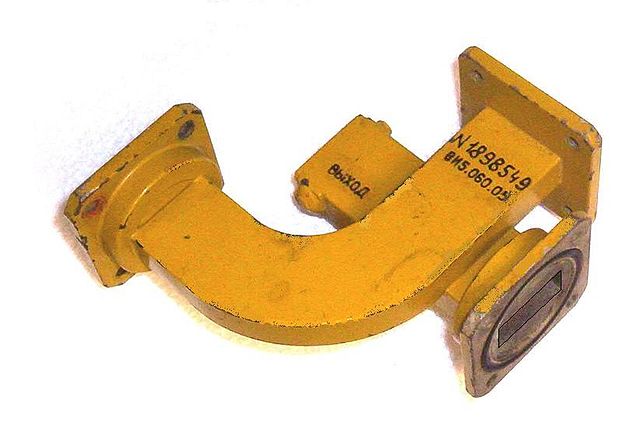In electrical engineering, a circulator is a passive, non-reciprocal three- or four-port device that only allows a microwave or radio-frequency (RF) signal to exit through the port directly after the one it entered. Optical circulators have similar behavior. Ports are where an external waveguide or transmission line, such as a microstrip line or a coaxial cable, connects to the device. For a three-port circulator, a signal applied to port 1 only comes out of port 2; a signal applied to port 2 only comes out of port 3; a signal applied to port 3 only comes out of port 1. An ideal three-port circulator thus has the following scattering matrix:
A waveguide junction circulator used as an isolator by placing a matched load on port 3. The label on the permanent magnet indicates the direction of circulation.
Rotating modes in a junction circulator.
Internal construction of a stripline junction circulator having triangular ferrites and an irregular triangle-shaped resonator.
Internal construction of stripline junction circulator having disk ferrites and a disk-shaped resonator.
In electrical circuit theory, a port is a pair of terminals connecting an electrical network or circuit to an external circuit, as a point of entry or exit for electrical energy. A port consists of two nodes (terminals) connected to an outside circuit which meets the port condition – the currents flowing into the two nodes must be equal and opposite.
Coaxial circulators. Circulators have at least three ports
A Moreno coupler, a type of waveguide directional coupler. Directional couplers have four ports. This one has one port permanently terminated internally with a matched load, so only three ports are visible. The ports are the openings in the centres of the waveguide flanges






